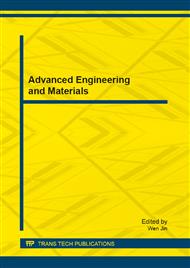p.236
p.241
p.248
p.252
p.258
p.263
p.269
p.275
p.280
Numerical Simulation on Temperature and Stress Field of Multi-Pass Welding of Thin Stainless Steel Plate
Abstract:
Welding parameters have important affect on welding quality. In this paper, temperature field and residual stress field simulation of thin 316L stainless steel plate are performed by finite element method. The welding process is multi-pass butt TIG(Tungsten Inert Gas) welding. Simulation model are established by SYSWELD code with multi-pass bead. A Gaussian heat source representing the arc energy is verified and the temperature distribution in multilayer welding process is simulated. Then the results are compared with test results measured by thermal-couples. Effects of welding speed and interpass cooling time during multi-pass on temperature field and stress field are studied. The results show that the faster the welding speed and the longer the cooling time, the higher the residual stress will be.
Info:
Periodical:
Pages:
258-262
Citation:
Online since:
February 2013
Authors:
Price:
Сopyright:
© 2013 Trans Tech Publications Ltd. All Rights Reserved
Share:
Citation:


